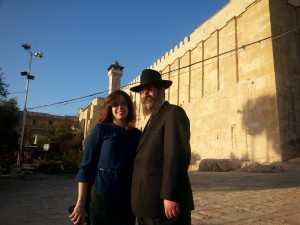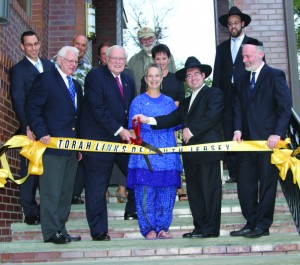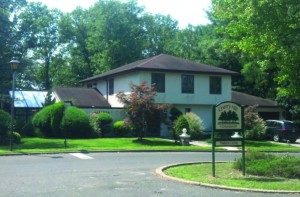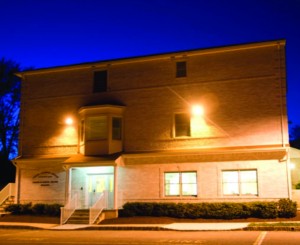From the Ground Up: Growing Torah in the Garden State
A trio of resourceful rabbis discovered the winning recipe to creating a frum community from scratch. They identified regions where Jews were plentiful but Judaism was scarce, and employed the motto “Give them Torah and they will come.”
It worked.
South Jersey’s spiritual transformation began with three modern-day pioneers who set out to teach Torah to Jews with little or no Jewish education. Within a short period of time, these adventurous rabbis—Rabbi Mendy Mangel of Chabad Lubavitch of Camden and Burlington Counties and Rabbi Yisroel Tzvi Serebrowski, director of Torah Links Center in Cherry Hill, New Jersey, and Rabbi Chaim Veshnefsky of the Jewish Learning Center of Monmouth County in New Jersey—succeeded in building inspired Orthodox communities from the ground up.
Cherry Hill—A Community Changed
Two decades ago, Rabbi Mangel moved from Brooklyn to the east side of Cherry Hill with the goal of sparking a love of Judaism in a largely unaffiliated Jewish community. (The west side of Cherry Hill, eight miles away, enjoys a thriving Orthodox community as well. See the article “Cherry Hill’s West Side: In-Town Community with an Out-of-Town Feel.”) He started out in a modest storefront. Struggling to gather a minyan, he initially persuaded Jews in the local bagel shop to come for davening. Evidently, the taste of Yiddishkeit satisfied a different appetite. Today, 200 congregants fill the shul every Shabbat and close to 400 residents, including men, women and teens, partake in the synagogue’s Torah classes each week.
“It’s been life-changing,” says Helen Rosenfeld, a resident of Cherry Hill for more than four decades. “I come from a totally assimilated background; I didn’t know anything. We came to see how Torah is so pertinent in our lives and we wanted more.”
David Roitman, who moved to the east side of Cherry Hill from Westchester County back in 1972, says he was spiritually “rudderless” before he started learning Torah with Rabbi Mangel. Twenty years later, Torah learning has become a family staple. His nine grandchildren attend Jewish day schools, and he continues to reap its benefits. “I’m at the Chabad center every day. It has brought my family a lot of joy.”

Rabbi Mendy Mangel and his wife, Dinie, of Chabad Lubavitch of Camden and Burlington Counties. Photo courtesy of Rabbi Mangel
In 2000, as part of the outreach efforts of Beth Medrash Govoha (BMG) of Lakewood, Rabbi Serebrowski began teaching in the community as well. He organized classes in people’s homes and at the local Jewish community center and public libraries—basically any place that would open its doors—and offered compelling presentations such as “If You Hated Sunday School, Then This One’s for You.” He invited prominent guest lecturers and held Shabbatons in various homes. People came. “The best ambassador is a satisfied customer,” says Rabbi Serebrowski. “One host would lead to another.”
As his following grew, so did the demand for his becoming a full-time community rabbi. “I was content living in Lakewood and traveling to Cherry Hill three or four times a week,” says Rabbi Serebrowski, who was part of a commuter kollel established by BMG. “I never thought we would have a shul or that I would wind up moving to Cherry Hill.” Since the 1970s, BMG has been sending young rabbinical students to establish kollels, with the goal of strengthening Jewish communities across the country. In the late 1990s, BMG began establishing “commuter kollels” in areas commutable from Lakewood.
This arrangement worked well for Rabbi Serebrowski, until one of his students—who lived five miles away from Rabbi Mangel’s established shul—made him an offer he couldn’t refuse. “He told me, ‘Rabbi, I’m all ready to keep Shabbos. If you start a minyan, I’ll never go back to work on Shabbos.’”
Rabbi Serebrowski consulted with his mentor, Rabbi Matisyahu Salomon, BMG’s mashgiach, and Rabbi Shmuel Kamenetsky, founder and rosh yeshivah of the Talmudical Yeshiva of Philadelphia. They both said, “You have no choice. You must move.”

Ribbon-cutting ceremony at the Max and Anna Krupnick Torah Links Center. Second from the right, in the front row, is Rabbi Yisroel Tzvi Serebrowski, founding rabbi and director, Torah Links of South Jersey. Photo courtesy of Rabbi Serebrowski
He did. Rabbi Serebrowski looked for a house in a centrally located area in Cherry Hill. He started a minyan in his basement, initially recruiting friends from Lakewood to ensure he would have ten men. People said, “Host a minyan Friday night only, or just Shabbos morning; don’t overdo it.” But his determination won out. “If I’m moving because of Shabbos, there is going to be a Shabbos. And there’s going to be every minyan, every week.” Rabbi Serebrowski still recalls his excitement the first time twenty people from the community showed up at the minyan. Then twenty people began showing up every Shabbat and he no longer had to make “minyan phone calls.” It had become a solid minyan. Today, on a typical Shabbat, the shul attracts between sixty-five and one hundred participants.
Susan Lipson, fifty, grew up Jewishly unaffiliated in Cherry Hill. Today she’s an integral part of the growing Orthodox community in her hometown, which—religiously speaking—barely resembles the town she knew as a child. “I feel absolutely part of the community. I’ve met so many people on so many different religious levels, and we all get along. We have this amazing shul and don’t have enough room for people; it’s a great problem to have.”
“We have everything here that anyone could possibly need—a self-contained community where people can grow at all levels.”
Genna Landa, forty-six, is a software developer and one of Rabbi Serebrowski’s “regulars” who faithfully showed up for davening and Torah classes from the outset. “Rabbi Serebrowski exudes warmth, and that’s what attracts people. He’s a scholar, a savvy businessman and a warm, caring mensch. [In terms of doing mitzvot,] he doesn’t say, ‘You should do this,’ but [rather] ‘this is what should be done.’”
In 2010, the community purchased a two-acre property, now referred to as the Torah Links Center, or TLC, which currently houses the shul, Hebrew school and adult learning and social programs. TLC’s Hebrew school has more than thirty students and is growing. In the past year, TLC’s programs have touched over 1,000 individuals with varying levels of religious observance.
Cherry Hill’s spiritual infrastructure grows more solid each year. In 2009, Rabbi Mangel opened a community mikvah, which services fifty-five women each month. The community is also in the process of constructing an eruv, which is due to be completed by December 2013. “I see it as a tremendous catalyst for frum families from outside the area to move in,” says Rabbi Serebrowski, who was also instrumental in getting the local ShopRite to open a “kosher experience” section.
“I want to create a situation that when a family becomes frum, they don’t have to leave for a more established Orthodox community,” says Rabbi Serebrowski. Rabbi Mangel concurs. “Our goal is to build Yiddishkeit. We’re bringing a love for Judaism where, no matter what their level, people are growing.”
Manalapan: On the Map
Fifteen years ago, Rabbi Veshnefsky began teaching an adult Jewish education course in Manalapan, New Jersey. The response was positive, so he launched a lunch-hour discussion group on Thursdays and a Monday evening program. Attendance grew, as did requests for more classes. Over time, Rabbi Veshnefsky’s popular shiurim evolved into what is today known as the Jewish Learning Center of Monmouth County (JLC), a new modern shul on six acres of land that offers an array of programs including adult classes, lectures, a Hebrew school and community social events. Rabbi Veshnefsky also opened the Bais Yaakov of Western Monmouth County and has plans to open a yeshivah ketanah for boys. In addition, the JLC community recently brought in a kollel to further strengthen the kehillah, which now boasts nearly forty families.
“We have a diverse group—some who learned in yeshivos and ba’alei teshuvah who didn’t; they’re all here to grow in Torah,” says Rabbi Veshnefsky.
In 2008, the community, located a mere twenty miles from Lakewood, erected the first eruv in western Monmouth County.
“In order to build a strong community, a shul rabbi must be a good shepherd,” says Rabbi Veshnefsky. “He must take care of people, be attentive to their needs. It’s also essential to teach authentic Torah, not ‘fluff.’ A rabbi could be charismatic and entertaining but ultimately, entertainment only serves to grease the wheels, to make the engine run smoothly; the engine is the Torah.”
The Mazal Factor
Growing a community requires Hashem’s blessing. I have seen many communities grow despite making huge mistakes and others hobble along, even though they are doing everything correctly.
Stephen J. Savitsky
OU chairman of the board
Of course home-cooked Shabbat meals don’t hurt either. Rabbi Veshnefsky extols his wife’s devotion to feeding hundreds of Shabbat guests, referring to it as her “pro-bono catering business.”
Hoping to motivate families to relocate to the area, Rabbi Veshnefsky, together with representatives from JLC’s new eight-member kollel, attended the OU’s Emerging Communities Fair. As a result, for several consecutive Shabbatot after the fair, the community hosted numerous families checking out Manalapan, considering the possibility of settling there.
“We always knew we wanted to raise our family in a small growing community,” says Tzipporah Daneshrad, twenty-seven, who discovered Manalapan at the 2011 OU Emerging Communities Fair. She and her husband had taken pilot trips outside the tri-state area and realized they would prefer to live closer to family. “We thought we would have to move across the country when [the ideal community] was actually in our own backyard,” she says. “Manalapan is a warm, welcoming community where you can buy a beautiful home with land—and actually get your money’s worth. My husband found his makom Torah here. He’s learning more than he ever did; he made three siyums in the past two years and he works full time. It’s been the best decision ever.”
She’s particularly impressed by the community’s eagerness to grow religiously. “There is one woman who just began covering her hair; we saw that transition happen,” says Daneshrad. “There may be diverse religious levels, but everyone is growing; this is not a community where people consider themselves finished products.”
Frum-from-birth families continue to join the Manalapan mix. “My father read about the community in a Jewish paper,” says Yossi Stamler, thirty-five, a financial consultant who grew up in Brooklyn and moved with his wife to her hometown of Chicago. They decided to move back East, looking for a community in the tri-state area with an out-of-town feel. They tried Manalapan.
“Rabbi Veshnefsky got me excited about learning and now I can’t get enough,” says Stamler. He was also taken by the community’s extraordinary warmth. “At first I thought, ‘what’s the catch?’ But then I realized they genuinely want to do for others. Our first Shabbos here, we were walking home from shul and it started pouring. A member of the community walking with us ran to his home and returned with raingear for everyone. I miss nothing about the city.”
Rabbis Mangel, Serebrowski and Veshnefsky are enjoying the fruits of their labor. What began as small groups of Torah classes have blossomed into full-blown mainstream frum communities. Recently, while giving a warm mazal tov to new grandparents at a shul kiddush, Rabbi Serebrowski looked around him and marveled at the sight—the room was teeming with young children. “There weren’t nearly enough highchairs to go around.”
Bayla Sheva Brenner is senior writer in the OU Communications and Marketing Department.



